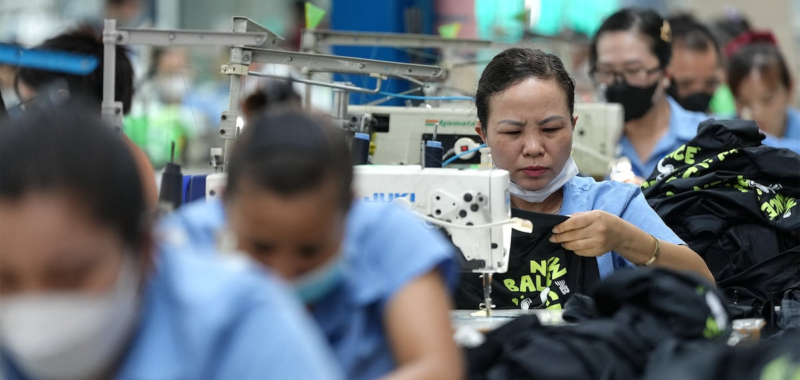
The author has shared a Podcast.You will need to accept and consent to the use of cookies and similar technologies by our third-party partners (including: YouTube, Instagram or Twitter), in order to view embedded content in this article and others you may visit in future.
Subscribe to the BoF Podcast here.
Background:
President Donald Trump announced an unprecedented wave of tariffs on April 2, imposing duties as high as 54 percent on fashion imports from key manufacturing countries, including China and Vietnam, and 20 percent on goods from the EU. These measures immediately sparked panic across global markets, ratcheting up the odds of a US recession and causing sharp stock price declines for major fashion brands such as Nike, Victoriaâs Secret and VF Corp.
Sustainability correspondent Sarah Kent and luxury correspondent Simone Stern Carbone join executive editor Brian Baskin and senior correspondent Sheena Butler-Young to break down the tariffsâ effects on manufacturing, luxury brands, consumer behaviour and potential future shifts within the industry.
Key Insights:
- The belief that these tariffs could quickly restore US-based fashion manufacturing is unrealistic. âIt would take years of investment to build up the infrastructure and skill base within the US to replace manufacturing capacity that has been moving abroad for decades. For the apparel industry, it just does not exist on the scale that would be needed,â explains Kent.
- Luxury brands, traditionally insulated by European-based production, will also face pressure. âEven for luxury brands that pride themselves for their production in countries like mostly France and Italy, they are going to be hit with some tariffs too,â Stern Carbone points out.
- The tariffs introduce a complex challenge for luxury brands, requiring careful balancing of price adjustments, consumer sentiment and creativity amid ongoing economic uncertainty. âItâs this mix between pricing, demand, maybe a lack of creativity, and also incentivising customers to actually purchase luxury goods,â says Stern Carbone. âYou donât know what [Trump] is going to do next, you donât know if this is going to stick, so are you going to spend $10,000 on a handbag – even if you can technically afford it – when you donât know what tomorrow brings?â emphasises Kent.
- The industry isnât entirely powerless. âBrands have a voice. Brands are part of the global economy. Brands can lobby,â says Kent. âThey can make it known that they donât like this. If youâre not raising your voice and saying, âhey, this is really hurting big business and itâs not making America great again,â then youâre not even trying.â

